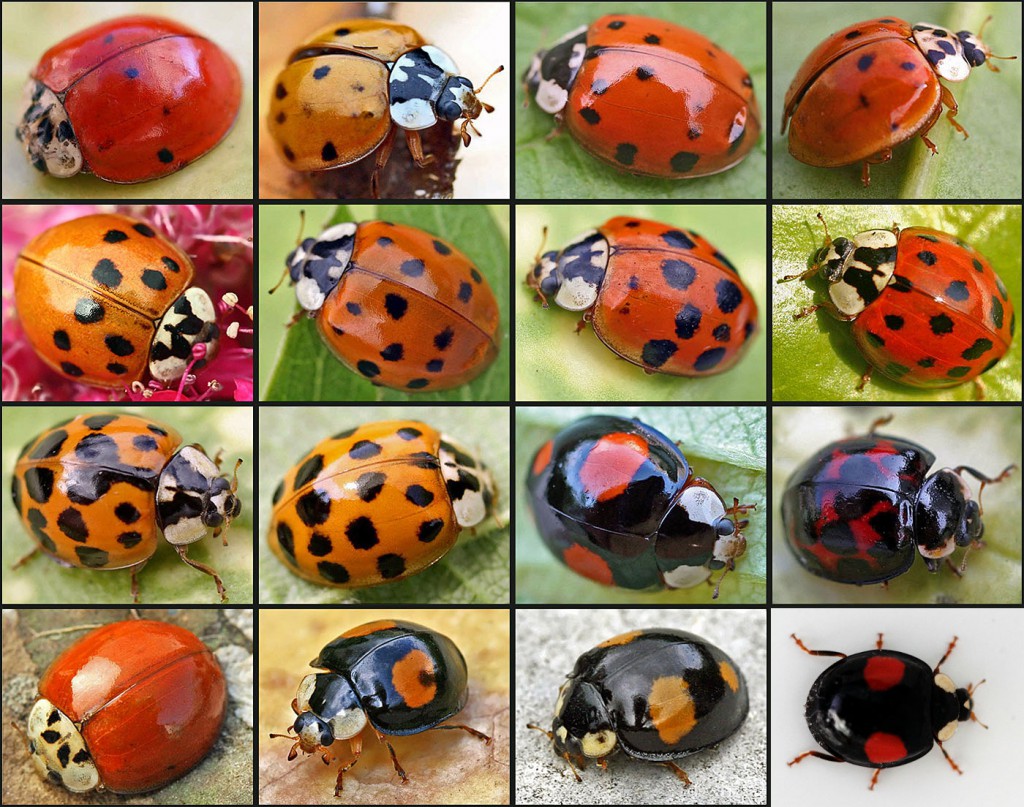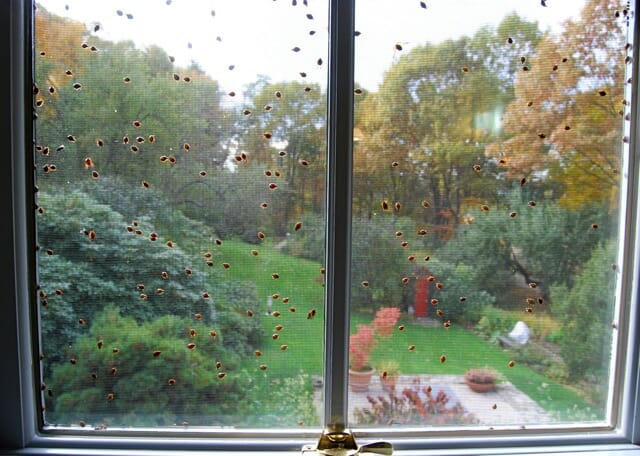The cold weather has left many of us stuck inside and given us a chance to catch up on movies or relax by the fire. However, as we battle cabin fever, another critter is trying desperately to seek shelter for herself and her 500 closest friends: the Asian lady beetle.
The Asian lady beetle (Harmonia axyridis) was introduced to the United States in the 1970s as a means to control aphids and other pests on important crops. These beetles may be a symbol for luck and appear cute with their black spots on their orange bodies, but they are in fact voracious predators. They reduce pest populations with ease because both the larval form and adult forms feed on aphids, mealybugs, whiteflies, and other soft bodied pest insects. This may seem like a great idea, but these non-native lady beetles have turned into a major pest and have even begun to displace our native lady beetle populations.
It can be very difficult to tell the difference between the Asian lady beetles and our native species. Usually, Asian species tend to have more white on their speckled pronotum, or “shoulders.” Native species’ pronotums are darker, and many have a richer red color compared to the Asian beetle’s orange tint. However, each species has countless variations in color and pattern, making differentiating between native and invasive almost impossible with the naked eye.

One important distinction between our native and invasive beetle species is that the Asian lady beetles are gregarious, while the native lady beetles are not. Native lady beetles are not and have never been pests in our homes because their life cycle synchs with our climate. However, Asian species will scramble to find shelter to overwinter as the temperatures begin to drop. In many cases, their best bet to find shelter is any opening within a house: window screens, attic vents, door jams. Also, because they are gregarious, they will seek each other out so it only takes a few choosing to invade your home to attract even more.
Unfortunately for both us and the beetles, many will end up starving in homes throughout the winter because there are not usually enough plant pests for them to eat indoors. As they die, they begin to stink and can often attract secondary pests like carpet beetles that will feed on their bodies.
The best way to deal with lady beetles is to prevent them entering the home in the first place. Make sure all door jams are sealed with weather stripping, all vents have fine wire mesh over them, window screens are secured, etc. This will minimize infiltration by the desperate little pests. If you do manage to be overwhelmed by them, simply vacuuming them up with the appropriate vacuum attachment will do the trick. They do not bite, multiply, or do damage indoors, but the sheer numbers in which they appear are why they are classified as pests.

[Margaret Roach, awaytogarden.com]
Even though they can wreak havoc in the winter, the established populations of Asian lady beetles can be very advantageous to have in your garden. To promote the presence of native lady beetles, be sure to plant at least some native ornamentals in your landscape and only use pesticides when pest populations reach levels that the native predators can’t reduce.